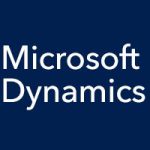In our Microsoft Dynamics SL blog entries over the last month, we’ve been focusing on the Accounts Payable (AP) module, covering the AP setup options that offer so much flexibility for your unique way of doing business, as well as going over each of the following:
- Entering a payment with the Voucher and Adjustment Entry screen
- Using the Payment Selection screen to select the payments to be made
- Printing the checks
- Correcting problems with checks that have been printed
- Pre-payments
Today we’re going to look at:
- The Voucher Entry – Distributed Liability screen
- Check reconciliation in Accounts Payable
- The “Pay When Paid” feature
The Voucher Entry – Distributed Liability screen is useful if you have multiple companies set up in your system: a main company and multiple subsidiary companies. The main company has centralized control over cash, but you may want to transfer responsibility for payables to the subsidiaries. This screen works like the other voucher entry screens, but in the details you can assign items to specific companies.
The Check Reconciliation screen is used to validate checks that were cashed. This functionality is generally done in the Cash Manager module, but the functionality is found here in Accounts Payable as well.
The Pay When Paid feature connects payables documents to receivables, so that subcontractors are not paid until you are paid by the customer. In the Payment Selection screen, you won’t even see payments that are connected to receivables that have not come in yet. You can delete these links between payables and receivables at any time.







